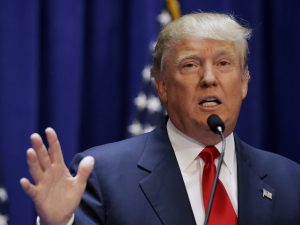
22-06-2017 (Important News Clippings)
To Download Click Here.
Bankruptcy code no magic wand
ET Editorials

However, it would be naïve to expect solutions overnight. Under the code, an insolvency petition can be filed after a single default without giving any notice, and within 180 days, lenders and borrowers have to find a way to revive the company, failing which the process for auctioning of assets begins.
A quicker way is for the banks to sell their bad loans to asset reconstruction companies (ARCs), who could then undertake the tedious task of resolving bad loans. This way, the banks get their debt burden off their back and can resume lending. Of course, they would have to take a haircut and sell their bad assets to ARCs at a discount, and get additional capital to underwrite the impact. ARCs can then decide how to restructure the companies underlying the assets that they buy.The options include providing funds to run the company or putting the insolvency code to use. Many benches need to be set up quickly for the adjudicating authority — debt recovery tribunals for individuals and unlimited liability partnership firms, and the National Company Law Tribunal for companies and limited liabilities — as they have to take a final decision to accept or reject the insolvency resolution plan.
Insolvency professionals must be mobilised and deployed. And the legal infrastructure must be made functional, to thwart attempts to stymie resolution through stays. If all these things are done, we can see some rapid progress in resolving the bad loan problem. The crucial step is to let banks take a haircut without that leading to a witch hunt.
भयावह प्रतीत होती नई विश्व व्यवस्था
अमेरिका के नेतृत्व वाली वैश्विक आर्थिक और राजनीतिक व्यवस्था को ट्रंप प्रशासन के चलते गहरी चुनौती का सामना करना पड़ा है। इस संबंध में विस्तार से जानकारी दे रहे हैं शंकर आचार्य
(लेखक इक्रियर में मानद प्रोफेसर और देश के पूर्व मुख्य आर्थिक सलाहकार हैं। लेख में प्रस्तुत विचार निजी हैं।)

कुपोषित विकास
संपादकीय

देश की आर्थिक राजधानी के तौर पर मशहूर मुंबई से महज सौ किलोमीटर की दूरी पर स्थित नंदुरबार, धुले और मालघाट जैसे आदिवासी इलाकों में पिछले करीब डेढ़ दशक से कुपोषण से होने वाली मौतों की त्रासदी लगातार बनी हुई है। राज्य में कुपोषण के चलते हर साल ग्यारह हजार लोगों की जान जा रही है। इनमें ज्यादातर संख्या नवजात बच्चों की है, जिनकी मौत जन्म के बाद एक महीने के भीतर हो जाती है। यह हालत दरअसल बहुस्तरीय कोताही का नतीजा है। सरकारी योजनाओं पर अमल में लापरवाही और संवेदनहीनता से लेकर चिकित्सा के मोर्चे पर घोर अव्यवस्था ने हालात को ज्यादा शोचनीय बना दिया है। इस मामले पर मुंबई हाईकोर्ट में रिपोर्ट पेश करने वाले डॉ अभय बंग ने बताया कि हर साल लगभग दो हजार मेडिकल के विद्यार्थी पलायन कर दूसरे शहरों में चले जाते हैं; ग्रामीण इलाकों में डॉक्टर काम नहीं करना चाहते और सरकारी बॉन्ड के उल्लंघन पर भी उनसे जुर्माना नहीं वसूला जाता। इस वजह से राज्य सरकार को न सिर्फ नौ सौ करोड़ रुपए का नुकसान हो चुका है, बल्कि डॉक्टरों की अनुपलब्धता का खमियाजा सबसे ज्यादा संबंधित इलाकों के आदिवासियों को भुगतना पड़ता है।
कई अध्ययनों में ये तथ्य आ चुके हैं कि देश के चालीस से पैंतालीस फीसद बच्चे कुपोषण के शिकार हैं और हर साल लाखों बच्चे इस वजह से मौत के मुंह में चले जाते हैं। एकीकृत बाल विकास कार्यक्रम से लेकर मिड-डे मील जैसी कुपोषण निवारक योजनाएं अपर्याप्त आबंटन तथा भ्रष्टाचार, दोनों की शिकार हैं, और इसलिए बेमानी साबित हो रही हैं। कुछ साल पहले तत्कालीन प्रधानमंत्री मनमोहन सिंह ने कुपोषण को राष्ट्रीय कलंक कहा था। लेकिन उनके दस साल के कार्यकाल में वह कलंक वैसा का वैसा बना रहा। अब भी वैसा ही बना हुआ है। जबकि हमारे संविधान के अनुच्छेद इक्कीस ने जीने की गारंटी दे रखी है।
Bringing GM to the table
Promoters of GM food need to reach out to consumers in a transparent, engaging manner
Rama Mohana R. Turaga teaches public policy and sustainability at the Indian Institute of Management, Ahmedabad. The views expressed are personal
On May 11, 2017, the Genetic Engineering Appraisal Committee (GEAC) — the scientific committee of the Ministry of Environment, Forests and Climate Change — that regulates genetically modified (GM) crops in India — had cleared GM mustard for commercial production. Anti-GM groups immediately opposed the decision and appealed to the Minister for Environment, who gives the final clearance, not to accept the GEAC’s recommendation.
Issues at core of opposition
The question of whether India should allow commercial production of GM crops has been one of the more enduring public policy debates over the last decade-and-a-half. After the approval of Bt cotton in 2002, the attempt to bring Bt Brinjal into commercial production faced serious resistance in 2010. After the GEAC approved Bt brinjal for commercial production, the then Environment Minister, Jairam Ramesh, placed a moratorium after undertaking extensive public consultation. Proponents of GM crops, including Noble laureates, insist that opposition to GM crops is driven by irrational fears of harm to human health and having an environmental impact and accuse opposing environmental groups of misrepresenting facts. Such arguments, however, are unlikely to convince the opponents of GM crops. While the debate is complex, involving a wide range of scientific, socio-economic, and political factors, it is important to understand two related issues that are fundamental to the opposition: invoking the precautionary principle for regulatory decision-making and a lack of trust in government and industry that promotes and benefits from GM technologies.
One of the principal reasons for opposition to GM crops is the potential for serious, irreversible damage to human health and the environment. This is especially relevant in the context of crops such as Bt brinjal which involve direct consumption by humans, unlike Bt cotton. The widespread havoc that chemical pesticides and fertilizers have caused since the Green Revolution only adds credence to these concerns. While GM supporters claim that there is little scientific evidence of adverse impacts so far, GM opponents cite the need for longer term assessment of adverse impacts and more concrete evidence of no adverse effects. Implicitly, GM opponents are invoking the precautionary principle, which is a widely incorporated one in several international agreements and treaties on the environment. In the context of technologies such as GM crops, where there is significant scientific uncertainty over their safety, the precautionary principle suggests that we wait until a broader scientific consensus is achieved. For example, regulations in Europe, where GM crops face similar opposition, explicitly invoke the precautionary principle as the basis for deciding whether GM foods should be allowed.
Lack of transparency
In a well-articulated decision letter at the time of rejecting Bt brinjal, the then Environment Minister, Jairam Ramesh, outlined the need for the GEAC “to draw up a fresh protocol for the specific tests that will have to be conducted in order to generate public confidence”. The GM mustard case does not provide much evidence that anything has changed since the moratorium on Bt brinjal.
If there is a genuine case to be made to allow GM crops to improve yields and address India’s food security, GM supporters might want to start cultivating an environment of openness and transparency to allay genuine fears instead of dismissing GM opponents as being “irrational”. On its part, the government should adopt a participatory approach to bring together all stakeholders to develop regulatory protocols that restore trust in the process. The burden of proof lies with the promoters of GM technology to persuade consumers, farmers and activists that among various alternatives available for sustainable food production — e.g., organic farming, use of biopesticides — GM technology is at least a serious option that we should embrace


